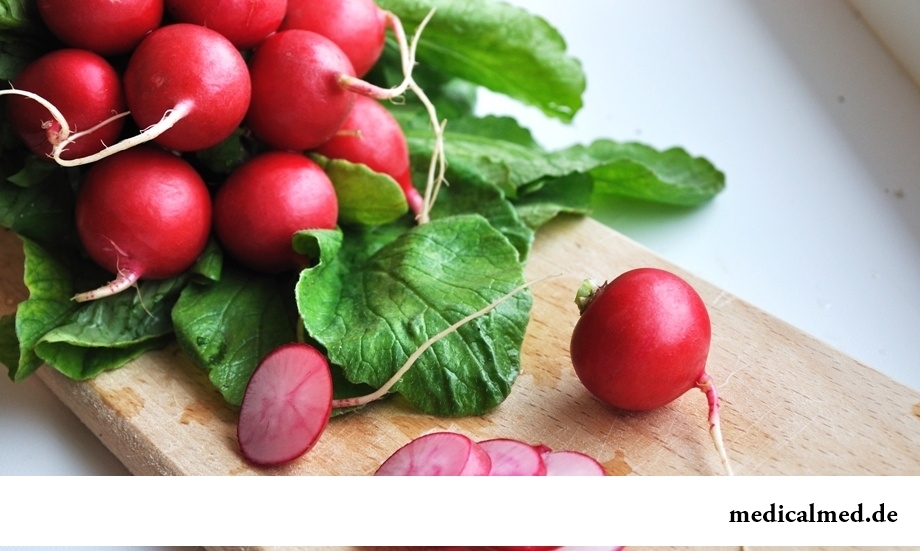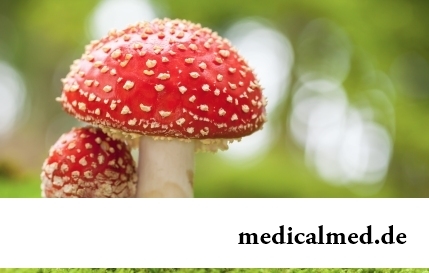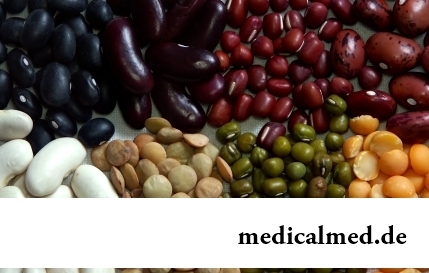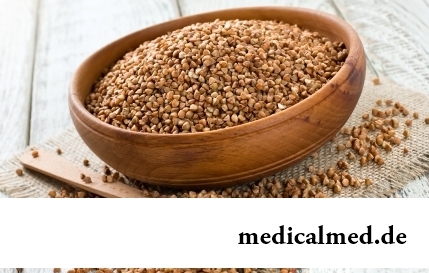





Garden radish
The garden radish is an edible plant from family cabbage which is widespread and is popular in many countries of the world. It is grown up and eaten as vegetable.

Biological features and distribution of a garden radish
For the first time the garden radish was grown up in Central Asia. In Japan, Greece and Egypt this vegetable is known since ancient times. Rome grew up winter grades of a garden radish and ate them with salt, vinegar and honey.
Since the end of the 16th century the garden radish gained distribution in Europe and began to be appreciated by the French cooks who began to add it to refined dishes.
To Russia the garden radish was brought from Holland by Peter I, and is later than his steel to eat exclusive classes of society.
There are several main grades of a garden radish which differ by origin and are divided into the European, Chinese and Japanese grades.
The garden radish can be both an annual, and biannual plant. The form of a root crop can be round or extended with pink, violet and red-yellow shades.
Useful properties of a garden radish
The garden radish has a set of useful properties, thanks to the structure which is vitamin-rich groups B, mineral substances (potassium, phosphorus, sodium, calcium, magnesium), ascorbic acid, proteins and cellulose.
The root crop contains fats, sugar, enzymes and organic acids which are useful to gums, teeth, circulatory and musculoskeletal systems.
The advantage of a garden radish for people with an excess weight, cardiovascular diseases, failures in work of the alimentary system and blood circulation disturbances is high.
In east medicine useful properties of a garden radish estimated long ago. The advantage of a garden radish as the rejuvenating means which influences intercellular membranes, improving their permeability and a possibility of absorption of nutrients is revealed.
Cellulose which contains in this vegetable helps removal from an organism of cholesterol and harmful substances. On the content of cellulose the garden radish is similar to tomatoes, garlic, beet and cabbage, but surpasses vegetable marrows twice.
Also the garden radish contains useful substances which normalize the content of sugar in blood.
At a headache fresh juice of this vegetable is effective, and at injuries, radiculitis, bruises, stretchings and joint pains impose compresses with the crushed garden radish.
In cosmetology use nutritious masks with small cut garden radish and addition of olive oil.
Useful properties of a garden radish are shown at prevention of atherosclerosis and for appetite improvement. Juice of a garden radish is antiedematous, cholagogue and anti-inflammatory drug.
Garden radish caloric content
Caloric content of a garden radish is similar to tomatoes, bush pumpkins and eggplants, but surpasses these vegetables in amount of protein.
Caloric content of a garden radish makes 19 kcal., and also a vegetable contains 1 g of proteins, 0,1 g of fats and 3 g of carbohydrates.
Consumption
The garden radish is appreciated pleasant taste, sharpness and juiciness. Eat, generally can use a vegetable root crop, and a tops of vegetable in the form of tincture and for salad.
The regular use of a garden radish improves complexion, normalizes functioning of cardiovascular system and stabilizes work of digestive organs.
The international medical researches conducted at Ohio university (USA) proved that vegetables and fruit with a violet shade are prophylactics of cancer of digestive organs. The main reason for advantage of a garden radish and similar to it vegetables is existence of pigments of anthocyans in them which have anticarcinogenic activity.
From root crops of a garden radish cook salads and okroshka, and use foliage for soups.
In a midland of Russia the garden radish is grown up in the early spring in hotbeds, and in April landed on the open ground. This vegetable ascends within several days after landing, quickly grows and yields a plentiful harvest. The fresh garden radish contains vitamins and minerals, important for a human body, which are especially necessary during the winter period of year.

Contraindications
People with individual intolerance and predisposition to allergic reactions at the use of a garden radish can have a dizziness and a headache, nausea, vomiting and diarrhea.
With care the garden radish should be used to people with diseases of the alimentary system, in particular with gastritises and a peptic ulcer. At the frequent use of this vegetable there can be attacks and exacerbations of some diseases of bodies of a GIT.
Because the root crop contains cyanogenetic glycosides, it should not be used to people with diseases of a thyroid gland.
In the presence of disturbances in functioning of endocrine system it is better to use a garden radish in a boiled look.
During sneezing our organism completely stops working. Even heart stops.

On health of the person physicians know about salutary action of animals long ago. About 7 thousand years ago great Hippocrates рекоменд...
Section: Articles about health
Good appetite was always considered as a sign of good health. The correct operation of the mechanism which is responsible for the need for nutrients and receiving pleasure from process of its satisfaction demonstrates that the organism functions without special from...
Section: Articles about health
It would seem, about it there can be no disagreements: water is necessary for a human body for normal life activity, and about how and when it should be drunk, all know. It turned out that the situation is not absolutely so: for many years there are very persistent delusions connected with this question. Let's consider the most widespread of them....
Section: Articles about health
Each of us repeatedly noticed that the people having the same passport age are sometimes not similar on one-years at all. One...
Section: Articles about health
Musicotherapy – a treatment method which caused and causes a set of a controversy concerning its efficiency. However the facts are relentless: during the numerous researches curative impact of music on an organism was scientifically confirmed. Since then in a number of the countries a method...
Section: Articles about health
For many women the word "fat" sounds as a sentence. In aspiration to an ideal figure they try to exclude, first of all, from the menu all dishes containing fats without having at the same time a clear idea of a role of these substances in exchange processes, and of effects for health with which food restrictions of this sort are fraught. For what the human body needs fats and as their deficit in a diet is shown, we also will try to find out....
Section: Articles about health
Mushrooms - the surprising inhabitants of our planet having a set of wonderful qualities. Thanks to one of them, a mold mushroom of Penici...
Section: Articles about health
Proofs of efficiency of Mildronate at treatment of coronary heart disease with stenocardia can be found in many publications of the end of the twentieth century. Researches were conducted since 1984, including placebo - controlled effects. In total клиничес...
Section: Articles about health
Life does not indulge the modern woman special emotional comfort and carelessness. The fatigue, troubles at work, misunderstanding in a family and various illnesses immediately affect a condition of hair and skin. And there is a wish to look safe and attractive so! Substantially competently picked up diet can improve situation....
Section: Articles about health
The pancreas performs two functions in a human body: release of enzymes without which digestion carbohydrate is impossible...
Section: Articles about health
The varicosity has familiarly many, statistically, this disease more than a half of all adult population. As a rule, the varicosis affects preferential superficial vessels, and is shown by characteristic cosmetic defects. Guo...
Section: Articles about health
Coffee – favourite drink of many. For the last decades it more than once already declared very harmful, extremely useful and even necessary for normal life activity. In spite of the fact that this product became for us usual for a long time, there are many myths about properties of coffee and its impact on a human body. Readers can get acquainted with the most widespread of similar delusions today....
Section: Articles about health
Ability of an organism to resist to adverse environmental factors (to impact of temperature drops, humidity and pressure...
Section: Articles about health
According to data of World Health Organization, the cataract is diagnosed almost for 7% of the population of Earth. The statistics of incidence is considered not full as at an initial stage the illness, as a rule, does not cause to the person of special inconveniences, and many having got sick...
Section: Articles about health
The depression not without reason is considered one their main troubles of our century: for scientific and technical progress, acceleration of rate of life and a surplus of information of people it is forced to pay with stresses, negative emotions and weakening of protective forces of an organism. As a result widely the states which are characterized by the increased uneasiness, falling of interest in life, spiritual and physical discomfort extend....
Section: Articles about health
History of cultivation of a buckwheat contains more than five thousand years. Grain which is received from this plant is used for пригото...
Section: Articles about health
Maternal milk is the best food for the newborn. It is the unique natural product containing an optimum set of nutrients, and which is best adapted in order that the baby normally developed and it was protected from harmful fa...
Section: Articles about health
Cystitis, or inflammation of a mucous membrane of a bladder, this very widespread disease which, owing to some features of a structure of bodies of urinogenital system, women have approximately four times more often than men. Women aged from 20 up to 45 years enter into the main risk group. Cystitis is an illness of a bacterial origin. It can have an acute or chronic current. The second option is dangerous not only a frequent recurrence, серьезн...
Section: Articles about health
Statistically, in Russia about 34% of citizens smoke. Most of consumers of tobacco has problems about health sooner or later...
Section: Articles about health
So, you resolved to lose weight. And now you try to understand what to begin with: from exercise stresses or a diet? And how to make that process of weight loss did not give you an inconvenience, and, on the contrary, brought joy?...
Section: Slideshow
Scientists have no unambiguous opinion on a proximate cause of emergence of a carcinoma cutaneum today. Only the factors promoting development of this illness are precisely established. Treat them: long impact on skin of ultraviolet rays, radiation exposure, thermal injuries, injuries of skin by aggressive chemicals (pitches, acids, alkalis, etc.), genetic predisposition (existence of malignant new growths of skin in the family anamnesis), at...
Section: Articles about health
New year, wedding, birthday, office party – an occasion to drink at the Russian person will always be. How to reduce a negative impact...
Section: Articles about health
The way of life of people promptly changes from year to year: if about ten years ago the personal computer was not in each family, then today already very few people do without this device. Certainly, and children master the computer at full speed: they not only I play...
Section: Articles about health
It seems, quite recently you brought the baby from maternity hospital, but time flew by, and here it is already going to join the first in life children's collective. How to prepare the child for visit of a garden? What needs to teach him to facilitate adaptation process? What to tell and how to behave that the kid transferred changes in the life without serious consequences? Let's try to find answers to these questions....
Section: Articles about health
For the person who daily since morning gathers for work it is very important to wake up vigorous and ready by day of work. On most...
Section: Articles about health
Impossibility to conceive the child – a trouble of many Russian families. During quite long time was considered that main "culprits" of troubles such are women. Modern physicians claim that the situation is different: about a half of failures at...
Section: Articles about health
The phenomenon of improvement of a condition of the patients at administration of drugs who are not containing active agents, so-called effect of placebo is known long ago. At the end of the 18th century the American doctor Perkins began to treat people the "miracle" sticks made of alloy of steel and brass. Was for several minutes to press such subject enough to a sore point that it became much easier for the patient. Having suspected Perkins of charlatanism, his colleagues tried to repeat "miracle" by means of sticks, steles...
Section: Articles about health
